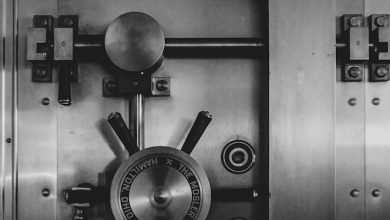How to Create and Manage a Crypto Trading Bot

- Understanding the Basics of Crypto Trading Bots
- Choosing the Right Exchange for Your Trading Bot
- Setting Up Your Crypto Trading Bot
- Implementing Trading Strategies for Maximum Profit
- Managing Risks and Limiting Losses with Your Bot
- Monitoring and Fine-Tuning Your Trading Bot
Understanding the Basics of Crypto Trading Bots
When it comes to delving into the world of cryptocurrency trading bots, it is essential to have a solid understanding of the basics. Crypto trading bots are automated software programs that interact with cryptocurrency exchanges to analyze market data and execute trades on behalf of the user. These bots can be programmed to follow predefined strategies or even designed to respond to market conditions in real-time.
One of the key advantages of using a crypto trading bot is the ability to trade 24/7 without the need for constant monitoring. This can be particularly advantageous in the volatile cryptocurrency market where prices can fluctuate dramatically at any given moment. Additionally, trading bots can help to eliminate emotional trading decisions, as they operate based on logic and predefined parameters.
It is important to note that while crypto trading bots can be powerful tools, they are not foolproof. They require careful monitoring and fine-tuning to ensure they are performing optimally. It is also crucial to have a solid understanding of the cryptocurrency market and trading strategies before using a bot, as well as to have a clear risk management plan in place.
Choosing the Right Exchange for Your Trading Bot
When creating a crypto trading bot, one of the crucial decisions you need to make is choosing the right exchange to execute your trades. The exchange you select will have a significant impact on the bot’s performance and profitability. Here are some key factors to consider when evaluating exchanges for your trading bot:
– **Liquidity**: Look for exchanges with high liquidity to ensure that your bot can execute trades quickly and at the desired price. Low liquidity can result in slippage, which can eat into your profits.
– **Fees**: Consider the trading fees charged by the exchange. High fees can significantly reduce your bot’s profitability, especially if you are executing a large number of trades. Look for exchanges with competitive fee structures.
– **Security**: Security is paramount when choosing an exchange for your trading bot. Make sure the exchange has robust security measures in place to protect your funds and personal information.
– **API Support**: Check if the exchange offers API support that is compatible with your trading bot. A well-documented and reliable API is essential for seamless integration with your bot.
– **Market Coverage**: Consider the range of cryptocurrencies and trading pairs offered by the exchange. A diverse selection of markets can provide more trading opportunities for your bot.
– **Reputation**: Research the reputation of the exchange in the crypto community. Look for user reviews and feedback to gauge the exchange’s reliability and trustworthiness.
By carefully evaluating these factors, you can select the exchange that best suits your trading bot’s needs and maximizes its potential for success in the crypto markets.
Setting Up Your Crypto Trading Bot
After choosing the right cryptocurrency trading bot, the next step is setting it up properly. This process involves connecting your exchange account to the bot, configuring your trading strategy, and adjusting risk management settings. Here are some key steps to help you set up your crypto trading bot effectively:
1. **Connect your exchange account**: Begin by linking your preferred cryptocurrency exchange account to the trading bot. This will allow the bot to access the necessary data and execute trades on your behalf. Make sure to follow the specific instructions provided by the bot provider to establish this connection securely.
2. **Configure your trading strategy**: Define your trading strategy based on your risk tolerance, investment goals, and market analysis. You can choose from various strategies such as trend following, arbitrage, or market-making. Set parameters for entry and exit points, stop-loss orders, and profit targets to automate your trading decisions.
3. **Adjust risk management settings**: Implement proper risk management techniques to protect your investment from significant losses. Set limits on the amount of capital to allocate per trade, leverage ratio, and maximum drawdown. Additionally, consider using risk mitigation tools like trailing stops or hedging to minimize potential risks.
4. **Monitor performance and make adjustments**: Regularly monitor the bot’s performance and analyze its trading results. Keep track of key metrics such as profitability, win rate, and drawdown to evaluate the effectiveness of your trading strategy. Make necessary adjustments to optimize the bot’s performance and improve your overall trading outcomes.
By following these steps, you can effectively set up your crypto trading bot and enhance your trading experience in the volatile cryptocurrency market. Remember to stay informed about the latest market trends and continuously refine your trading strategy to adapt to changing market conditions.
Implementing Trading Strategies for Maximum Profit
To implement trading strategies for maximum profit with your crypto trading bot, you need to carefully consider the specific goals you want to achieve. Start by conducting thorough research on various trading strategies that align with your risk tolerance and investment objectives. Once you have identified the strategies that suit your needs, it’s essential to backtest them using historical data to evaluate their effectiveness.
After selecting the most promising trading strategies, you can optimize them further by adjusting parameters such as entry and exit points, stop-loss levels, and position sizing. It’s crucial to monitor the performance of your bot regularly and make any necessary adjustments to ensure it remains profitable in different market conditions.
Additionally, consider diversifying your trading strategies to spread risk and maximize potential returns. By combining different approaches, such as trend following, mean reversion, and volatility breakout strategies, you can create a more robust trading bot that can adapt to changing market dynamics.
Remember that successful trading with a crypto bot requires a disciplined and systematic approach. Stick to your trading plan, avoid emotional decision-making, and always prioritize risk management to protect your capital. By implementing trading strategies thoughtfully and consistently, you can increase the profitability of your crypto trading bot over time.
Managing Risks and Limiting Losses with Your Bot
To effectively manage risks and minimize losses with your bot, it is crucial to establish clear risk management strategies. One key approach is setting stop-loss orders to automatically sell a cryptocurrency when it reaches a certain price point. This helps protect your investment from significant downturns in the market.
Additionally, diversifying your portfolio can help spread risk across different assets. By not putting all your eggs in one basket, you can reduce the impact of a single asset’s poor performance on your overall portfolio. This strategy can help safeguard against sudden market fluctuations.
Another important aspect of risk management is monitoring your bot’s performance regularly. By keeping a close eye on how your bot is executing trades and reacting to market conditions, you can identify any potential issues or anomalies early on. This allows you to make necessary adjustments to improve your bot’s performance and limit losses.
Furthermore, it is essential to stay informed about market trends and news that could impact the value of cryptocurrencies. By staying up to date with the latest developments, you can make more informed decisions about when to buy or sell assets using your bot. This proactive approach can help you mitigate risks and make better investment choices.
In conclusion, implementing effective risk management strategies, diversifying your portfolio, monitoring your bot’s performance, and staying informed about market trends are all crucial steps to managing risks and limiting losses with your crypto trading bot. By taking a proactive approach to risk management, you can increase the chances of success in the volatile world of cryptocurrency trading.
Monitoring and Fine-Tuning Your Trading Bot
After setting up your crypto trading bot, it is crucial to regularly monitor and fine-tune its performance to ensure optimal results. Monitoring involves keeping a close eye on your bot’s activity and making adjustments as needed to improve its effectiveness. Here are some key strategies for monitoring and fine-tuning your trading bot:
- Track performance metrics: Keep track of key performance metrics such as profitability, win rate, and trade volume to assess how well your bot is performing. Use this data to identify any areas that need improvement.
- Set up alerts: Configure alerts to notify you of any significant changes in your bot’s performance or market conditions. This will allow you to take immediate action if necessary.
- Adjust trading parameters: Periodically review and adjust your bot’s trading parameters such as buy/sell signals, risk tolerance, and position sizing to optimize its performance.
- Backtest strategies: Regularly backtest your trading strategies using historical data to evaluate their effectiveness and identify any potential weaknesses. Use this information to make informed decisions about adjusting your bot’s settings.
- Stay informed: Stay up to date on market trends, news, and events that could impact your bot’s performance. This will help you make more informed decisions about when to adjust your bot’s settings.
By regularly monitoring and fine-tuning your trading bot, you can improve its performance and maximize your profits in the volatile crypto market. Remember to stay proactive and responsive to changes in market conditions to ensure your bot remains effective in achieving your trading goals.



